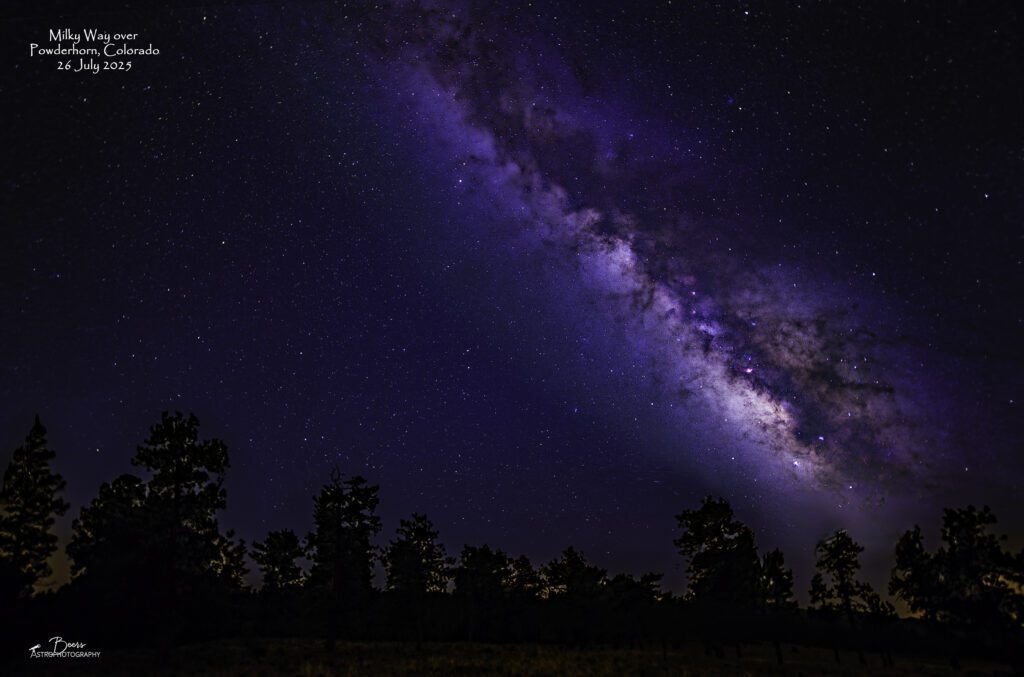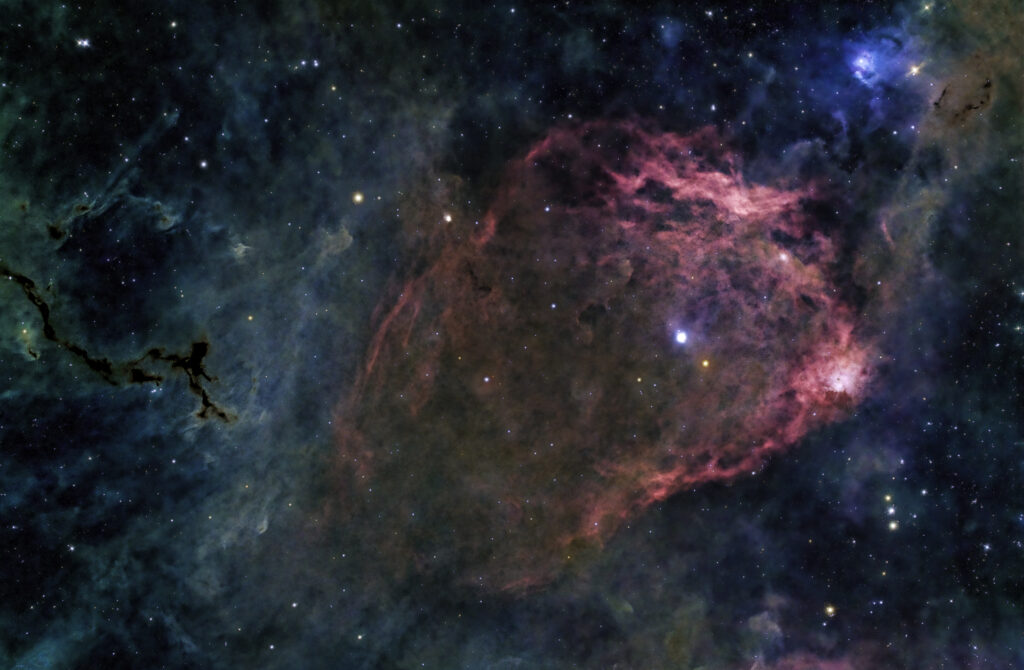A quick one-night “recon trip” to BLM land near Powderhorn, Colorado afforded us one-night in clear dark skies (our second this year!) to wring out the cobwebs of our camping and Beast-based imaging routines. If you’ve only got one night – you make the most of it – so it was SH2-129 Flying Bat and the Milky Way!! ...and this was first light with my newest imaging stream addition – the Askar f/3.9 0.7x Full Frame Reducer for the Askar FRA600

A second night this year in the Beast in dark skies…YES, it is late July!
We took a one-night quick trip to the Powderhorn, Colorado area over the New Moon weekend in July, mostly as a recon trip for our August anniversary dark skies trip but since the skies were clear, I decided to take the Southern Cross and its new Askar 0.7x reducer to give it a try, gathering some more data on the elusive SH2-129 Flying Bat/OU-4 Giant Squid Nebulae. I also took maximum advantage of the dark, clear skies and captured some Milky Way data once I got the Southern Cross going on its SH2-129/OU-4 mission.
We got an “early” start. (It would have been earlier…did I mention the Beast cobwebs to be wrung out? The Beast’s canopy spontaneously deployed, so we took about an hour to research on YouTube how to disconnect and retract it by hand – it’s always something!). Even with that one hour delay, we arrived in the Powderhorn area (after a stop in Gunnison for fuel and a most excellent hamburger from the food truck parked beside the gas station) at about 1330MDT. We were looking for a site in the trees that we’d seen on our way out of camp in July 2023. We took US Hwy 50 West, turned south on CR149 (Silver Thread Scenic Byway), and then after CR149 turned to the West, we turned north onto CR26 (Lake City Cutoff Road). We searched along CR26 for areas where we could camp and ended up at a flat (although there were a LOT of rocks (i.e., tripping hazards)) and somewhat treed area just off of BLM 3014D that we chose for our night’s camp. We’re calling the spot Tolvar Flats (38° 19’ 2.40” N, 107° 11’ 18.30”W) at 8814.2 feet (2686.56m) because of its proximity to Tolvar Peak and its relative flatness.
I suggested that we not set up the full camp (ground cover, canopy, stove, etc) for a one-night stay, but that idea was vetoed… So, after completing the camp set-up, I starting to set up my AP equipment at about 1530…periodically looking up at, and trying to ignore, the grey and storm-threatening clouds. Once I had the mount leveled, roughly aligned, and the telescope mounted on it, I asked Paul his opinion of the impending rain. “Yes, it’s going to rain. But, it’s going to clear up at about 2000MDT.” So, I took the telescope off the mount, set up the mount for its new location (using the hand controller to adjust its settings from their last Southern Hemisphere use), then covered the tripod/mount with a waterproof tarp, took Zeus for a walk, and we had dinner.
At about 1900, I ventured out to begin assembling the rest of the equipment – it was still pretty cloudy and there were a few sprinkles – but I was balancing the chance of a storm with the impending darkness, so I pushed forward. At astronomical twilight (2130MDT), the clouds cleared to the north, so I started the polar alignment process. By the time I was done with that (which took a very small fraction of the time it does in the Southern Hemisphere – THANK YOU Polaris!!) all the clouds had cleared!
I got the sequence started, the telescope and autoguider scope focused, and then started the sequence. I had a round of “rotate the camera CW/CCW/CW/CCW” (which is never a good sign) until the plate solving finally failed. (I put in my notes (and probably should put on the camera body or telescope rotation point) – CW is rotate to the LEFT!). I rebooted everything, put the camera back at the 90° angle that the plan called for, and started up again. The second attempt went well, with only one 9° rotation in the correct direction, and I was off to the races. With the first subframe captured at 22:18MDT.
The image, below and its “rest of the story” at https://beersastrophotography.com/gallery/sh2-129-flying-bat-ou-4-giant-squid-nebulae/ that I’m calling my Version #1 processing, again has the (faint blue OIII) OU-4 Giant Squid Nebula hidden within the Ha-dominant SH2-129 Flying Bat. I am willing to post it because I like the interesting blue, green, and aqua that came out in the image using the Askar f/3.9 0.7x reducer under dark skies…but I’m not done with it yet!! I attended Nico Carver’s 3 August 2025 Patreon Sunday Chat to ask the question – “is it really possible to capture this image (with the OU-4 Giant Squid visible) using a one shot color (OSC) camera?” Nico assured me, given enough data and by using HaOIII extract OIII processing, it should be possible.
So…enjoy the colorfulness (and let me know if you can see the Giant Squid!) in this image and standby for future re-processing versions where, hopefully, the Squid will be visible!

…and while I’m out here, I might as well image the Milky Way
After I got the Southern Cross going on the SH2-129 Flying Bat/OU-4 Giant Squid Nebulae I set up the Canon EOS Ra with the Sigma 14mm lens on a tripod to capture the Milky Way. I captured 46.5 minutes between 22:51 – 23:56MDT of a pretty spectacular Milky Way (ISO 1600, f2.0, 186 x 15sec).
The “rest of the story” is at: https://beersastrophotography.com/gallery/milky-way-over-tolvar-flats-near-powderhorn-co/

